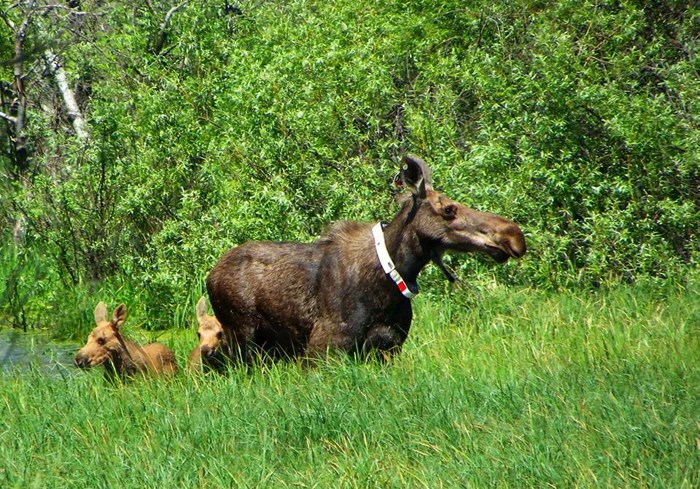The traditional range for moose has seemed to move south in Saskatchewan and that means into areas more normally farmland.
So what southern habitat do moose prefer?
That is what the Saskatchewan Farmland Moose Project is trying to determine.
The project is studying a moose population in a grassland ecosystem south of Saskatoon, an area that is a mix of farmland, and treed wetlands, explained Amy Wheeler with the University of Saskatchewan presenting at the Saskatchewan Wildlife Federation Convention held in Yorkton last week.
In 2013, 19 moose were collared so their movement could be tracked, with another 20 collared in 2014.
The study focused on looking at what habitat within the more farmland-oriented ecosystem the moose preferred at three times of the year.
The first was 20-days after calving.
“They selected trees and wetlands,” said Wheeler, adding the average area of movement at that time was 9.8 acres, although that did range from less than one acre to 42.
Twenty days after calving the moose tended to remain in treed areas.
“It’s a very vulnerable time period for the calf. They’re not very mobile,” she said, adding cover remains critical for the calf.
“They need cover,” she said. Adding the moose also begin to forage for better food at that juncture too.
The second timeframe the study focused on was summer.
Wetlands remains the primary habitat, followed by treed areas, but the moose also began to forage into cereal grain land, and to a lesser extent oilseed crops.
And finally studying winter patterns, moose again focus on treed areas.
“They select trees for more browse and wind protection,” said Wheeler.
The overall ranges of the collared moose in the project are large, from 227 square kilometres to 1000.
“They’re larger home ranges than other studies … including from Sweden,” said Wheeler, adding “a larger area is used in winter than summer.
“Other studies see the opposite.”
In terms of moose impacting crops, Wheeler said it does happen, and crop insurance coverage recognizes that. There were 819 reports of crop damage in Saskatchewan where moose were seen as the soul, or primary, cause of the damage.
Another measure of moose moving south is that they can be the cause of vehicular accidents.
From SGI data moose were involved in 478 accidents in 2013, and 488 in 2014.
“Autumn has the highest collisions and early winter,” said Wheeler.
Wheeler said fall makes sense since it is the time of rut for moose, and also hunting season. As a result of both moose are moving around more “and crossing roads and accidents happen.
“… And night is the most common time accidents happen.” Again Wheeler said that makes sense as moose are dark “you can’t see them.”




